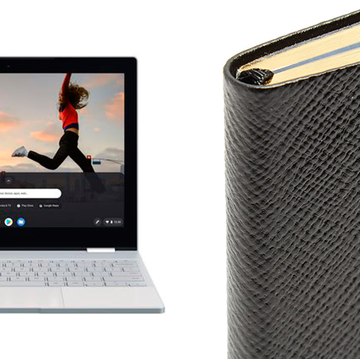Today, 1 in every 5 people in the world owns a smartphone, and now there are a handful of new syndromes that come with the increasing addiction.
***
1 | Text Claw and Cell Phone Elbow
"Text Claw" is a nonmedical term used to describe the finger cramping and sore muscles that come from continuous scrolling, texting, and gaming on smartphones. Using your phone too much can cause inflammation in your tendons and enhance existing conditions, like tendinitis and carpal tunnel. Similarly, "Cell Phone Elbow" describes tingling or numbness in ring and pinky fingers after bending your elbow for long periods of time.
If your nonstop smartphoning has you feeling sore and weak, do some stretches. Put down the phone, then try bending your wrists backward, putting your hands together like you're praying, and pushing down. Then, doing some wrist flexes. If you experience pain for longer than a week, try applying heat. Or better still, see a doctor.
2 | iPosture and Text Neck
Slouching over your phone for hours at a time is ruining your neck and hurting your back muscles. "iPosture" or "Text Neck" are just two of a few phrases doctors use to describe the excessive stress on neck muscles. According to a study of young adults in the U.K., 84 percent of those tracked experienced back pain during the last year, mainly due to being hunched over smartphones, tablets, and computers.
Fixing your posture can relieve lower back pain, and limiting your phone use can alleviate neck strain. While it seems awkward, try to hold your phone directly out and in front of your face instead of in your lap.
3 | Computer Vision Syndrome
Staring at the tiny font in your texts and scrolling through dozens of tweets can lead to eyestrain, blurred vision, dizziness, and dry eyes. Blurred vision plus sore neck muscles can also cause headaches.
If you're experiencing eye discomfort, make your phone's font size bigger. Mark Rosenfield, O.D., Ph.D., told Men's Health that phone users should try to hold their phones at least 16 inches away from their faces. Every few minutes look up from your screen at something far away for short breaks, and don't forget to blink.
4 | Nomophobia
Short for "no-mobile-phone phobia," this is exactly what it sounds like: the fear of being without your cell. According to a study of 1,000 people in the U.K., 66 percent of the population fears losing or being without their phones at any given time. Some of the symptoms of nomophobia include anxiety or negative physical symptoms if you have lost or cannot use your cell phone, obsessively checking to make sure you have your phone with you, and constantly worrying about losing it. The study found that women suffer from this more than men.
Experts suggest employing common anxiety-relieving relaxation techniques like yoga and deep breathing.
5 | Phantom Pocket Vibration Syndrome
A professor at Indiana University found that 89 percent of the undergraduates in her study experienced phantom vibrations when their phones weren't actually vibrating. The study also found that students who were dependent on text messages and social media updates were more anxious when their phones weren't really vibrating.
Try shutting your vibration function off and commit to only checking your phone during designated hours. If you have to keep your phone with you, put it aside in a backpack or coat pocket and resist checking it.
This article was originally published on Cosmopolitan









